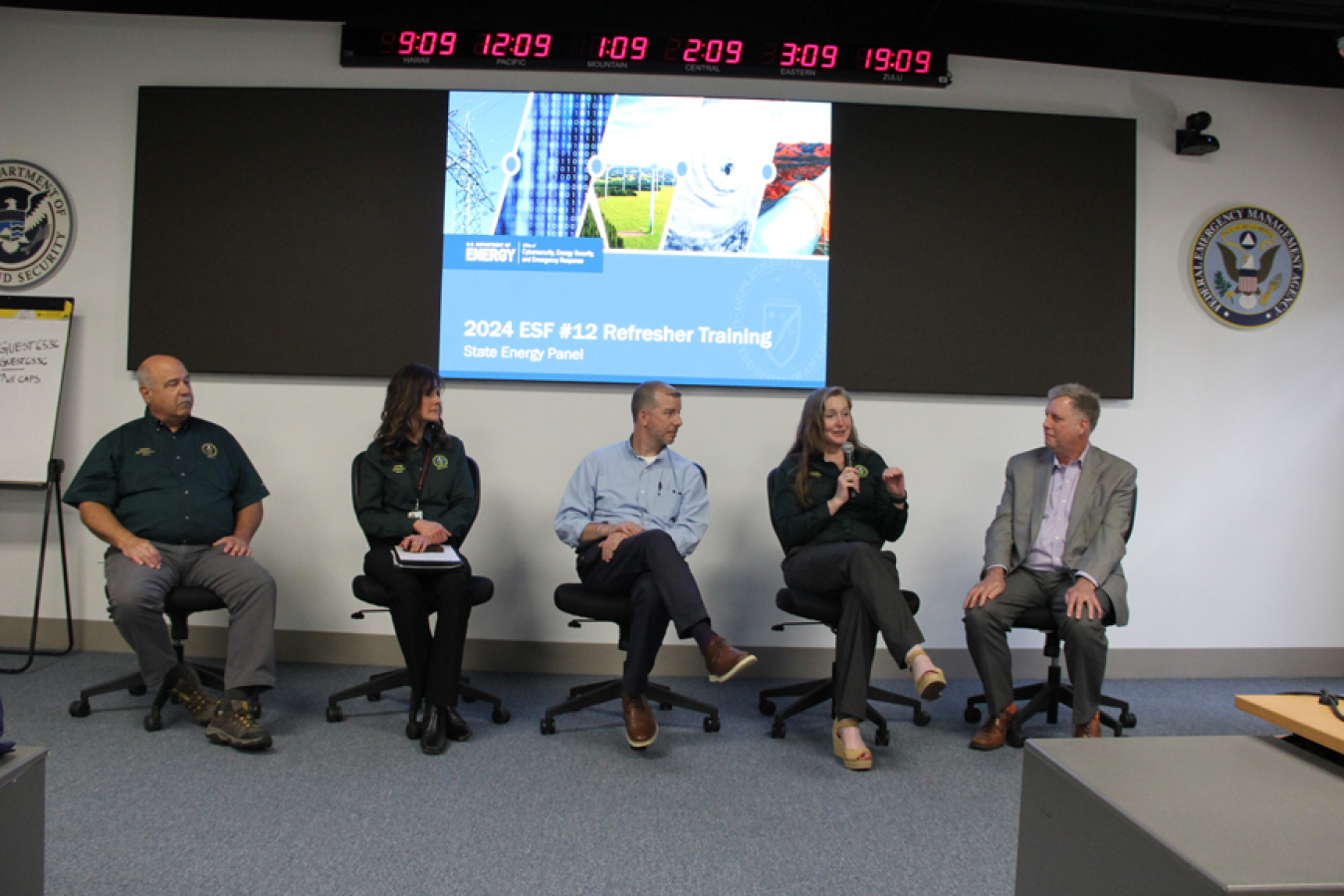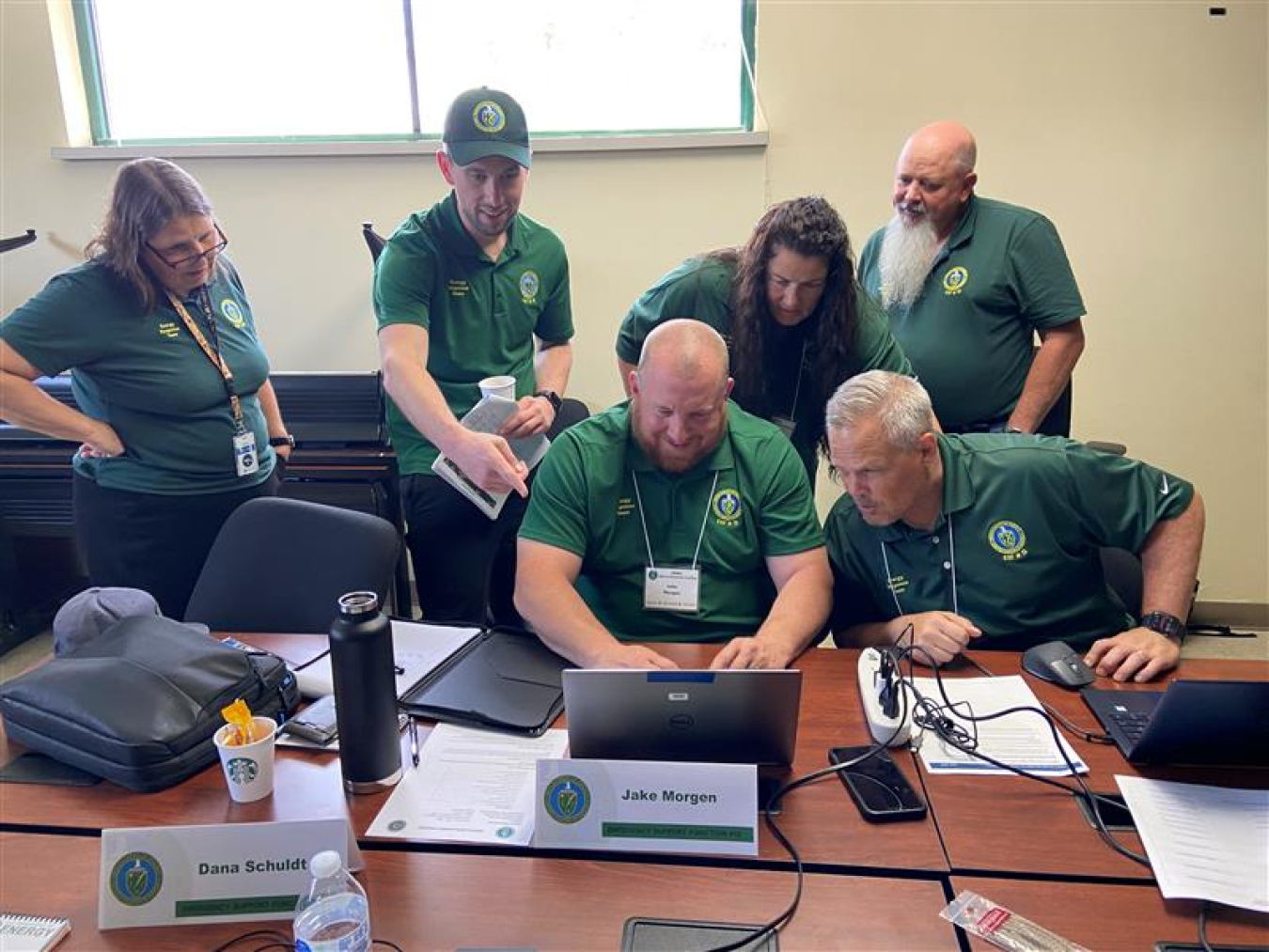The 2024 hurricane season is well underway, and the National Weather Service predicts it will be a busy one with 17-25 named storms and 8-13 hurricanes in the Atlantic alone.
Office of Cybersecurity, Energy Security, and Emergency Response
August 6, 2024The 2024 hurricane season is well underway, and the National Weather Service predicts it will be a busy one with 17-25 named storms and 8-13 hurricanes in the Atlantic alone. When extreme weather events cause damage and disruption to energy systems, DOE’s Office of Cybersecurity, Energy Security, and Emergency Response (CESER) steps into action to support energy restoration efforts in affected areas. CESER coordinates activities for Emergency Support Function (ESF) #12 – Energy under the National Response Framework to help facilitate the restoration of energy systems quickly and safely.
CESER’s emergency response team is active year-round, building and maintaining a cadre of responders across the country who are prepared for any scenario. Read on to learn how the emergency response team remains at the ready to support whenever and wherever disaster strikes.
Recruiting and Training Responders
Preparation begins with training and recruitment. ESF #12 responders are volunteers from across DOE offices and national laboratories with a desire to help communities in need. Each year, CESER conducts a call to serve and recruits new responders to volunteer their time to be deployed to any U.S. state or territory should the need arise. ESF #12 responders have all sorts of expertise to lend in the field, like craftsmanship, engineering, emergency management, and logistics. This year, the emergency response team added 16 new responders, bringing the total number of team members to 143.
All responders – new and experienced – are required to take a series of annual trainings to stay up to date on procedures, coordination strategies, and technology. These trainings are a cornerstone of preparation for hurricane season. Topics and activities covered in these trainings include:
- Roles and responsibilities of ESF #12 responders
- An overview of the complexities of energy infrastructure in the U.S.
- Simulated response activities with role-playing
- Hands-on training of technical tools such as EAGLE-I, Survey 123
- Networking with federal, state, and local responders in all regions of the country

Developing New Tools and Strategies
CESER and partners at the DOE national labs work throughout the year to develop innovative tools and technologies to assist with incident monitoring and response. One indispensable tool is EAGLE-I™, an interactive geographic information system (GIS) that allows federal and state users to view near-real time power outage data, map the nation's energy infrastructure, and obtain updates concerning the electricity, petroleum and natural gas sectors within one visualization platform. ESF #12 responders use EAGLE-I to gather, validate, and share data to support efforts on the ground.
Other response tools include drones to collect and analyze high resolution imagery to assist with damage assessments, and survey tools to collect and organize information on damaged infrastructure.

Solidifying Processes and Protocols
Each response is different, and as incidents change in size, scope, and complexity, ESF#12 response efforts and procedures must be scalable, flexible, and adaptable to meet evolving requirements and cascading effects.
At the beginning of each hurricane season, ESF #12 responders and the supporting operations team are briefed on the updated processes and roles that support a response, including:
- How to communicate with ESF #12 responders working remotely and on the ground, including safety updates
- Deployment logistics, like travel and lodging, for each responder
- Long-term planning to include responding to multiple events simultaneously
- Communication strategies to inform all stakeholders, like utilities; industry partners; state, local, and federal agencies; and the general public, of response updates
Strengthening Relationships
A perpetual year to year invariable is the fact that response is relationships. Working with partners – on the ground and across the country – is imperative for successful response efforts. From collaborating with other responding agencies in the National Response Coordination Center, Regional Response Coordination Center, and Joint Field Officers to facilitating restoration efforts with local utilities, CESER prioritizes and fosters these strong relationships all year round so that when an energy emergency happens, communities get the support they need to recover.
Stay up to date with CESER’s emergency response efforts at the Emergency Response Hub, and track weather across the country with the National Weather Service. Learn more about eligibility to join the ESF #12 team and serve in times of need. Don’t forget to follow CESER on X to get the latest updates during a response.

